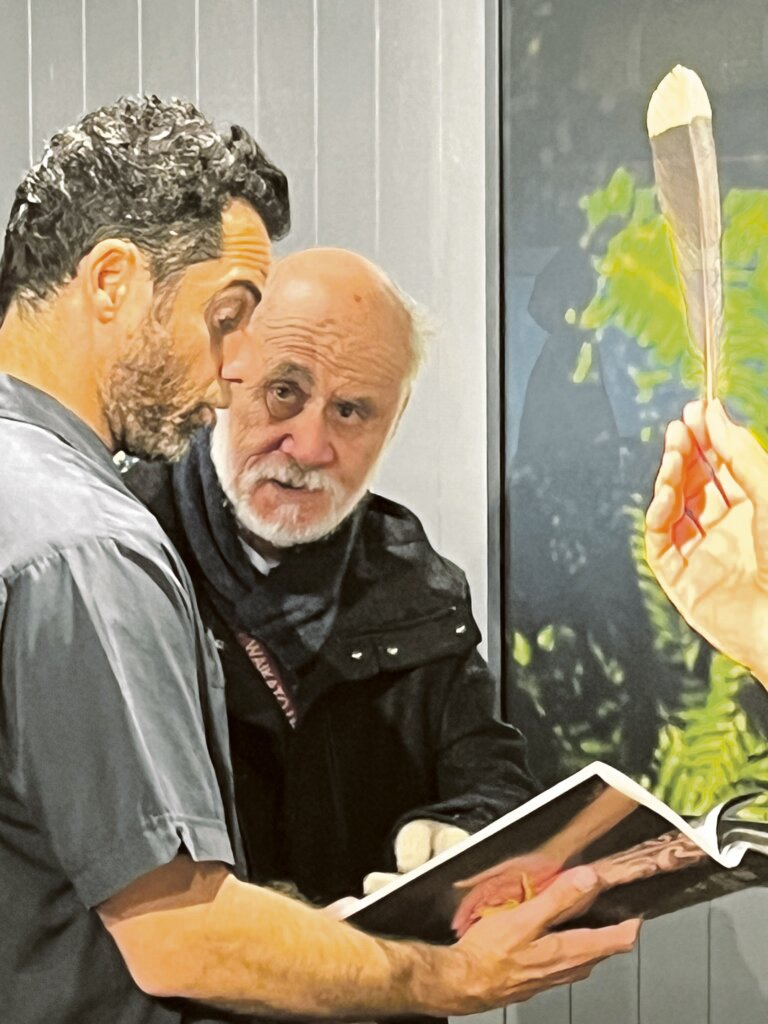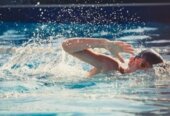An exhibition in Ōtorohanga invites viewers to do their own research.
Ki te kapu o taku ringa – In the palm of my hand – features wāhi mana or places of significance in the King Country.

Rodrigo Hill, left, with Professor Tom Roa.
There are no captions in the associated book or on walls explaining what the viewer is seeing – rather there is an invitation to learn and research.
Tom Roa and Rodrigo Hill from Waikato University launched the exhibition at Ōtorohanga museum last Friday.
Images, taken by Hill using both film and digital cameras, include an inside view of the cave of Maniapoto, near Hangatiki – where the 17th century chief lived as an elderly man.
One shows Kāwhia moana and two distant peaks which served as a tohu – a sign – to the people of the arriving Tainui waka.
Two photographs show hands connecting with nature. In one, they cradle a Naultinus gecko – moko kākāriki. In another, Roa holds a huia feather referencing that of Ngāti Maniapoto chief Rewi Maniapoto (1807-1894) in a colonial era painting.
There are also built environments such as the underside of the bridge across the Pūniu river.
“The image, stark as it is, contains an implicit invitation.” Roa said. “What is the mana of this image, and how do I give it proper regard?”
The exhibition was the result of a research project, Te Nehenehenui – The Ancient Enduring Beauty in the Great Forest of the King Country.
Photographs were taken following discussions with mana whenua with the intention to ‘decolonise the lens’ – so the work was informed by tikanga Māori rather the European approach, which holds the photographer as the images’ legal owner.
That had little regard for the mana of people or space, Roa said.
The pair described the work as a way to reassert and reclaim mana over ancestral knowledge, landmarks, flora, and fauna.
Photographer Rodrigo Hill is from Brazil and has lived here for 20 years with his wife and New Zealand born children.








